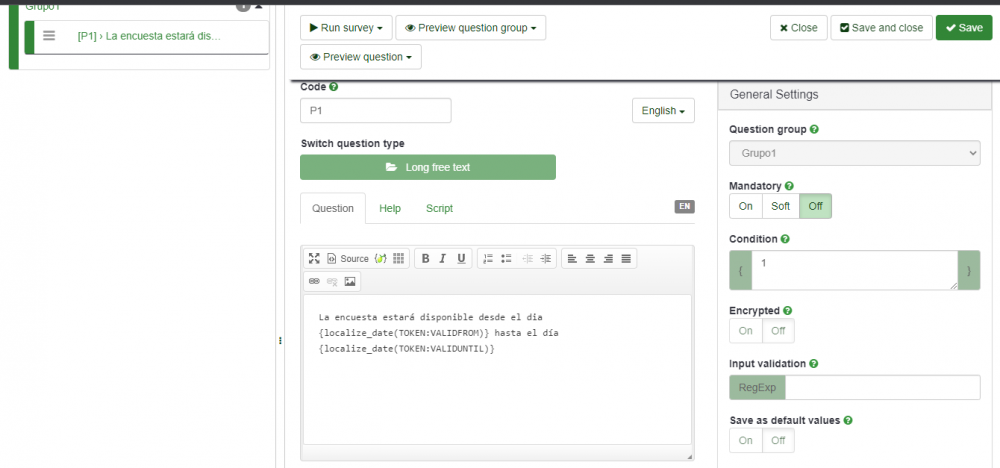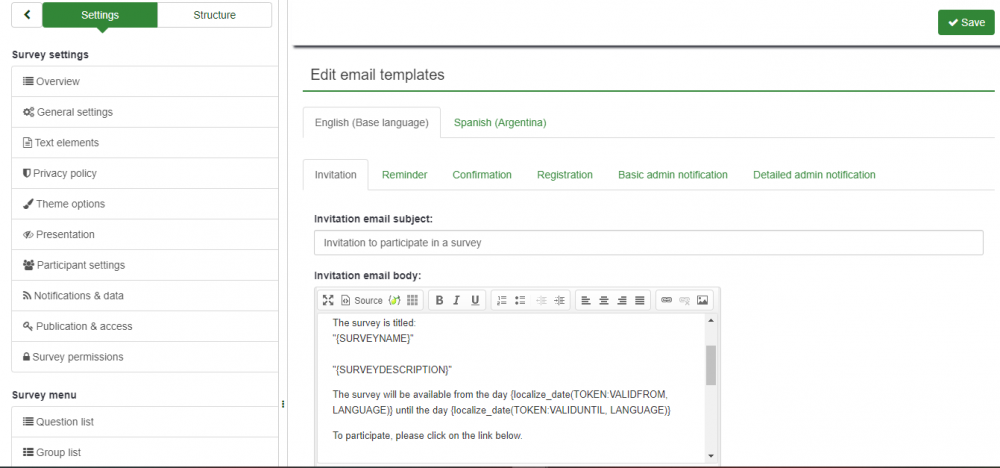DateFunctions: Difference between revisions
From LimeSurvey Manual
Gabrieljenik (talk | contribs) No edit summary |
Marked this version for translation |
||
| (One intermediate revision by the same user not shown) | |||
| Line 20: | Line 20: | ||
{{Alert|Before using these functions, the plugin must be activated in [[Plugin_manager#General|Plugin Manager]].}} | {{Alert|Before using these functions, the plugin must be activated in [[Plugin_manager#General|Plugin Manager]].}} | ||
=Usage Example on Welcome Message= | =Usage Example on Welcome Message= <!--T:5--> | ||
<!--T:5--> | |||
[[File:DateFunctions-LocalizeDate Sample Welcome.png|1000px]] | [[File:DateFunctions-LocalizeDate Sample Welcome.png|1000px]] | ||
=Usage Example on Email Template= | =Usage Example on Email Template= <!--T:9--> | ||
<!--T: | |||
[[File:DateFunctions-LocalizeDate Sample.png|1000px]] | [[File:DateFunctions-LocalizeDate Sample.png|1000px]] | ||
Latest revision as of 14:52, 27 November 2022
Usage
Functions for the ExpressionScript engine to handle date variables:
- localize_date(date[, language = null]): Formats a date according to the Survey's date format for the specified language.
- The date given should follow the following format "Y-m-d H:i:s", which is for example the one used by the TOKEN:VALIDFROM variable.
- The language used for localization defaults to current session language. If the current language is not configured in the survey, the survey base language will be used. When using in email templates, please use the token language as parameter as to set the expected language. Example: TOKEN:LANGUAGE
This plugin uses the ExpressionManagerStart plugin, and it creates this function. These 2 functions don't use JavaScript, so they are fully executed by the server. In case the function is used while taking a survey, the function will be executed only when the respondent moves ahead in the survey.

